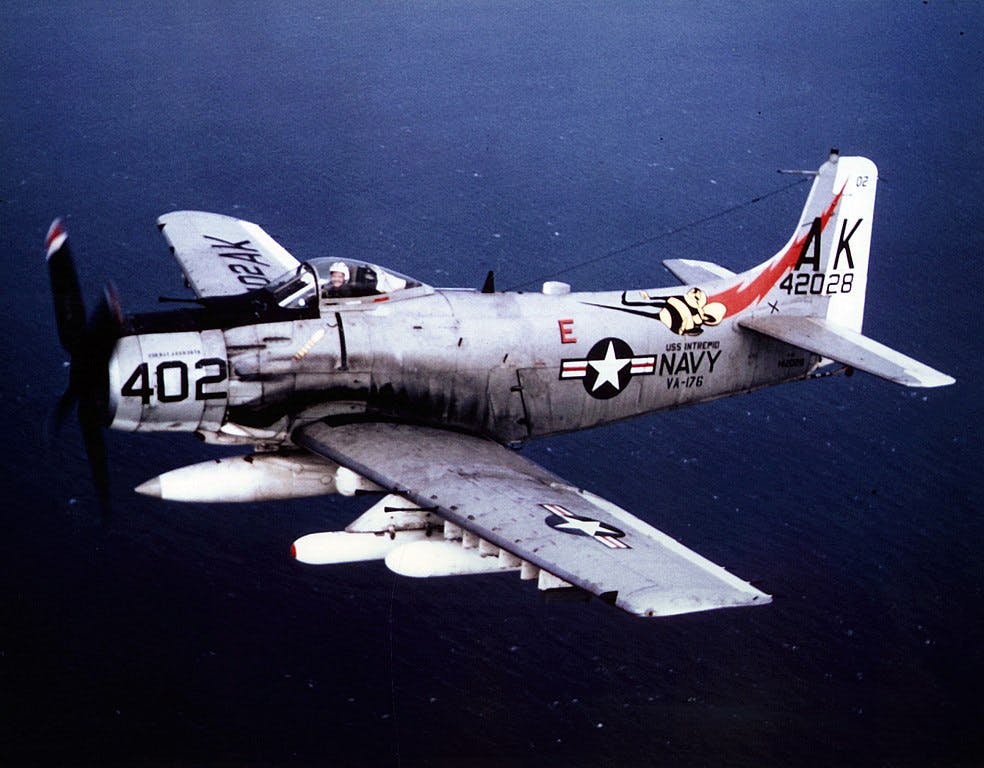During the Vietnam War, while modern fighter jets like the F-4 Phantom and F-105 Thunderchief were widely deployed, there was a propeller-driven aircraft that seemed outdated but proved to be incredibly effective and beloved by its pilots—the A-1 Skyraider. This is the story of a resilient and versatile aircraft that, though seemingly from the past, became a symbol of air power during the war.
History and Development
The A-1 Skyraider, initially designed by the Douglas Aircraft Company, was born at the end of World War II and officially entered service in 1946. However, it wasn’t until the Vietnam War that this aircraft truly showcased its full potential.
Effectiveness in Combat
Despite having only one propeller engine, the A-1 Skyraider could carry a large payload, even surpassing contemporary jet aircraft. With its ability to operate at low altitudes and slow speeds, the Skyraider could perform missions that jets struggled with, such as close air support (CAS), precision ground attacks, and even rescue missions for downed pilots.
One of the A-1 Skyraider’s notable roles was in “Sandy” missions—rescuing downed pilots in enemy territory. Thanks to its slow speed and long operational time, the Skyraider could protect the rescue area for extended periods while providing powerful fire support to fend off enemy forces.

A Pilot’s Pride
Despite its old-fashioned and slow appearance compared to modern jets, the A-1 Skyraider was affectionately nicknamed “Spad” by pilots—a nod to a World War I fighter plane. With its stability and high tolerance for damage, the Skyraider became a trusted companion to pilots during many challenging battles.

A Lasting Legacy
Today, the A-1 Skyraider is no longer in military service, but its image lives on in the memories of those who fought alongside it. With numerous achievements during the Vietnam War, the Skyraider is not just an aircraft but a symbol of perseverance and the ability to overcome any obstacle.
The A-1 Skyraider is proof that technology isn’t always the deciding factor in warfare. Sometimes, simplicity and resilience are what bring victory.





